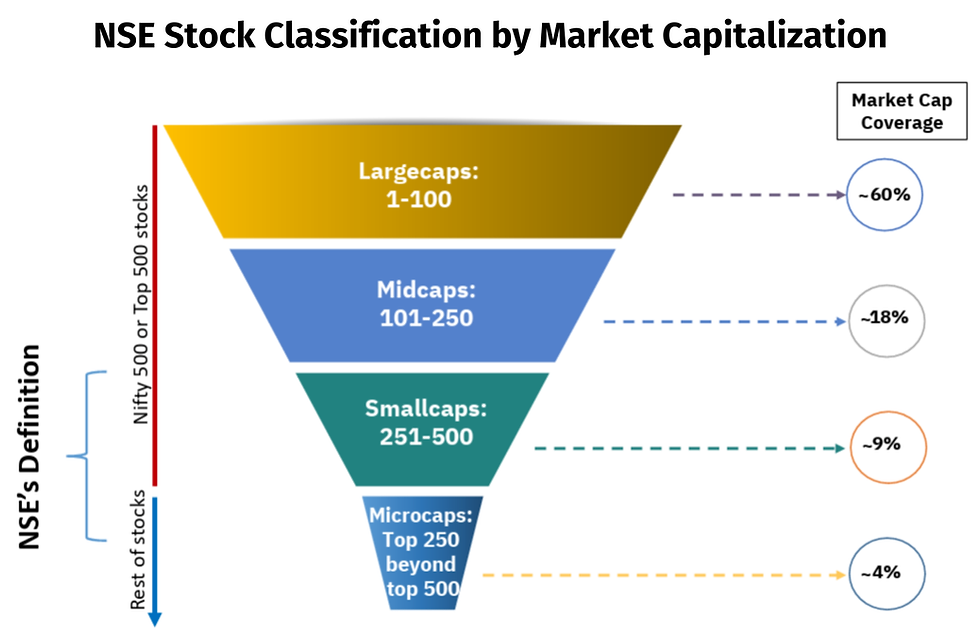The Entrepreneurial Challenge - II : Building Tax Efficient Portfolios
- Akshay Nayak
- Mar 31, 2024
- 4 min read
In my previous post The Entrepreneurial Challenge - I : Setting Financial Foundations, I had spoken at length about the intricacies and peculiarities involved when designing financial plans for entrepreneurs. I covered aspects such as setting up a cashflow management system, creating a monetary buffer for emergencies, estimating and providing for life and health insurance needs. I also spoke about how entrepreneurs need to provide for all of these aspects, both in the case of their households and their businesses. Once these aspects are appropriately taken care of, entrepreneurs would have a stable foundation on which to build their investment portfolios. Once portfolios are set up, care also needs to be taken to ensure that the financial plans set up for entrepreneurs and the investments recommended to them also provide for an adequate degree of tax efficiency. Therefore in today’s post I will focus exclusively on the process of setting up investment portfolios for entrepreneurs in the most tax efficient manner.
The broad process that is followed when constructing investment portfolios for entrepreneurs is the same as the process followed in the case of any other individual. In other words, portfolios for entrepreneurs would be built with a multi asset class approach to a clear asset allocation strategy. They would be built in accordance with the risk profile of the entrepreneur. The key point of difference in the case of an investment portfolio built for an entrepreneur would stem from the allocations to each asset class and the product choices within them. Entrepreneurs face a constant need for ample liquidity, owing to the need to provide for the monetary requirements of both their households as well as their businesses. Therefore portfolios for entrepreneurs must be built with an equal allocation to equity and debt, if not with a disproportionately high allocation to debt. This would be true regardless of the degree of an entrepreneur's risk tolerance as reflected by their risk profile.
The equity portion of an entrepreneur's portfolio must be built significantly differently as compared to others. In most cases, entrepreneurs may not need too much exposure to market linked equity products in their portfolios. Running their own business means that they automatically gain adequate equity exposure and risk, given that equity essentially represents business ownership. Any market linked equity exposure that is taken on must be restricted to adequately liquid large cap index funds. Gains on units sold after being held for at least 1 year are fully tax exempt to the extent of Rs 1,00,000 per financial year. Any additional gains would be taxed at a flat rate of 10%. This would represent a favourable scenario in terms of taxation for most entrepreneurs, who would likely fall under the highest tax bracket of 30% plus surcharge (if any).
Constructing the debt portion of an entrepreneur’s portfolio is a crucial exercise, given that this is the asset class which is likely to constitute the lion's share of the portfolio. Debt portfolios built for entrepreneurs must keep exposure to traditional debt products such as bank deposits minimal. These products would prove to be highly tax inefficient for most entrepreneurs. Debt portfolios may therefore be constructed using a combination of PPF and debt mutual funds. Credit risk and interest rate risk in the market linked component of the debt portfolio must be minimal. Therefore the ideal debt mutual fund categories for entrepreneurs would be liquid funds and money market funds. This ensures that the money which constitutes the debt portion of the portfolio is insulated against significant fluctuations in value. Gains from debt mutual funds are taxed at slab rates. But gains are taxable only on redemption of the debt fund units. Debt funds therefore offer entrepreneurs the benefit of tax deferral during the holding period. This represents a much more tax efficient option for entrepreneurs as compared to bank deposits, where interest income is taxed at slab rates for as long as the deposits remain active. An example of a sample debt portfolio for entrepreneurs is given in the graphic that follows.

Real estate may also be included in an entrepreneur's portfolio. Investments in real estate must be restricted to the house currently owned by the entrepreneur and a second house which would serve as an option if the need to relocate arises. This is because real estate is highly illiquid as an asset class, and may therefore involve significant impact cost when executing transactions. Moreover, the legal and procedural aspects involved in a real estate transaction may prove to be cumbersome and time consuming. Not to mention maintenance costs involved with residential property.
Though the broad components of financial plans and investment portfolios created for entrepreneurs remain the same as anyone else, the approach employed to go about doing so involves some significant points of difference. The need for the change in approach is mandated by the peculiarities that are specific to the context of an entrepreneur’s life. Entrepreneurs shoulder twice the amount of financial responsibility that any other individual does. The fact that they run one or more businesses along with their households means that financial plans and investment portfolios designed for them must be well balanced regardless of their individual risk profiles. In other words entrepreneurs' financial plans and portfolios must provide them enough security to allow them to discharge all their personal and professional responsibilities as and when they arise, while guarding them against potential income gaps. They must also facilitate sustained portfolio growth to enable entrepreneurs to meet any financial goals that they may have. Entrepreneurs must also make an effort to optimise their taxes for every financial year. I will cover strategies tax optimisation strategies for entrepreneurs in the next and final part of this series, next week.



Comments